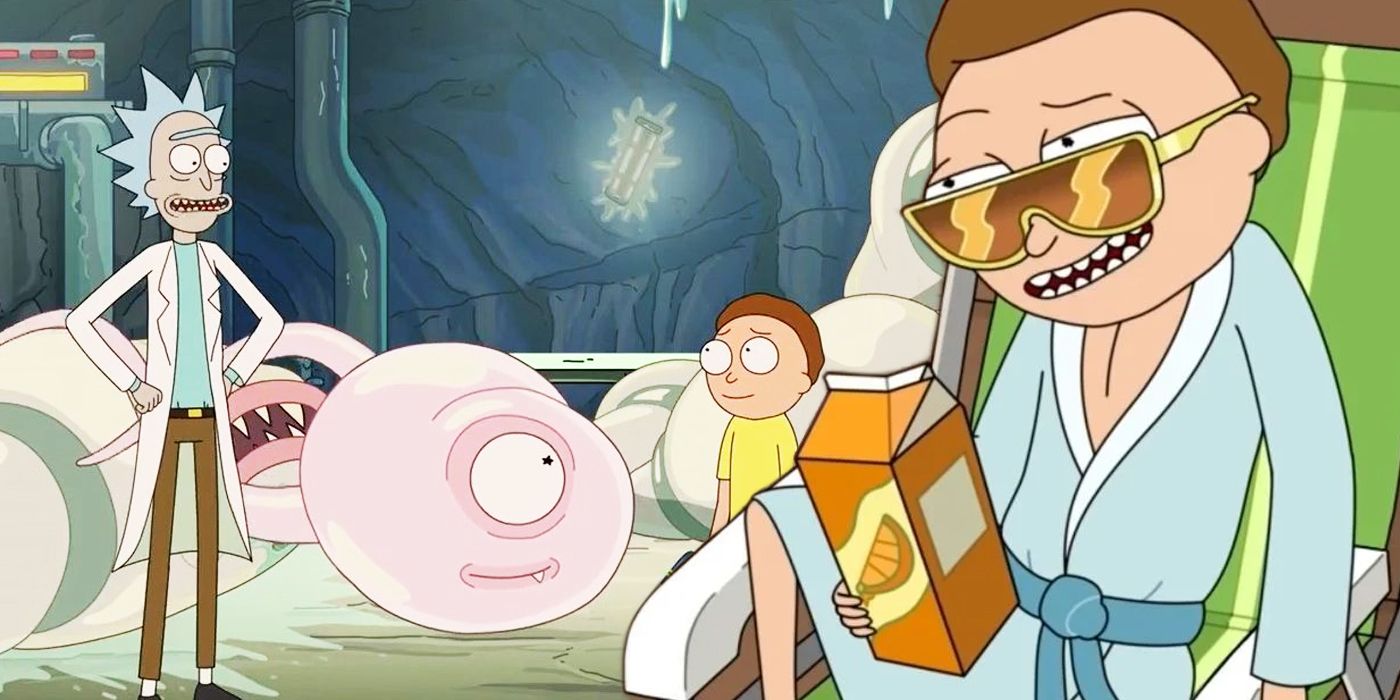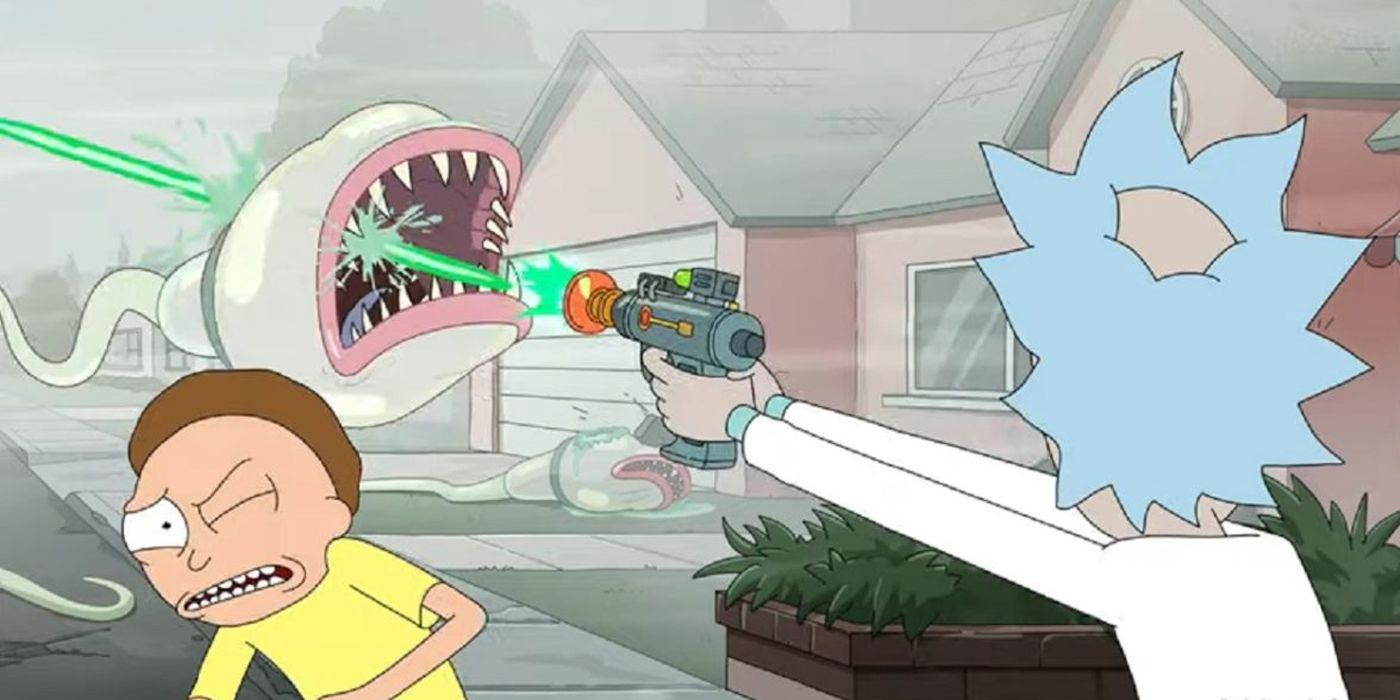
WARNING: The following contains SPOILERS for Rick and Morty season 5, episode 4, "Rickdependence Spray."
Sticky saved the day in Rick and Morty episode "Rickdependence Spray," but the animated series never explained why the mutated sperm cell had two tails (not to mention an eye). Rick and Morty season 5, episode 4 followed the action-packed repercussions for the titular characters' dishonesty, particularly teenage Morty's reluctance to admit his admittedly gross misuse of his mother's veterinarian equipment. This culminated in an exciting (if absurd) "climax" that resulted in Sticky impregnating a giant egg — but doesn't address the lingering questions about Sticky's unique morphology.
In"Rickdependence Spray," Rick's scientific experiment goes horribly wrong — as it often does — because the genetic material he used was tainted: Morty having experimented with the horse breeding mount earlier in the episode meant that, of course, his own genetic reproductive material was mixed with that of the equestrian sort. Morty comes face-to-face with his own shame when his spermatozoa (singular is "spermatozoon") take on gargantuan form and mutate into vicious, man-eating monsters.
Quickly turning into a pastiche, the Rick and Morty episode parodies action movies as overly masculine, through the satirical lens of semen — literally the essence of man — threatening the planet. Ironically, Sticky stands out from the rest of his kind because of his abnormality — both in terms of his behavior as well as his form. Less aggressive and fearsome than his peers, Sticky befriends Morty, which allows the abnormal spermatozoon to emerge victorious in the end, sneaking in at the final moments to fulfill his genetic purpose. Physically, Sticky is also obviously different: he has two flagellum, or tails, as well as a big eye, a more pink tone, and a generally less healthy (and less intimidating) appearance.

Sticky is an example of abnormal sperm morphology, which — according to Mayo Clinic — is actually very common. In fact, Mayo Clinic suggests that "only around 4% to 10% of the sperm in a semen sample are normal." Typical defects include the double tail, like Sticky has, as well as having two heads, a crooked tail, or just generally being misshapen. The healthier sperm have a much higher chance of fertilizing an egg, while the unhealthy sperm are believed to have a higher chance of birth defects or other complications. In Sticky's case, his genetic abnormalities were likely exaggerated due to the experiment, resulting in him forming his big friendly eye in addition to the mouths and teeth that the others developed.
Narratively, Sticky's design in the Rick and Morty season 5 episode serves a dual purpose: it both makes the "tame" version of Morty's mutated sperm cell instantly identifiable among the others, while also parodying the trope of an abandoned, disfigured or disabled character switching sides because of a kind act (probably best associated with Sloth's arc in The Goonies). It also increases the likelihood of the "giant incest baby" shown in the post-credit scene having birth defects. It's possible that Sticky was the more social and intelligent version of the mutated sperm (apart from the "queen" of course), so him fathering the baby seen in the post-credits scene could prove to be beneficial down the road. One thing is certain: "Rickdependence Spray" will be remembered as one of the strangest Rick and Morty episodes ever made.
from ScreenRant - Feed https://ift.tt/3yNLCzJ

No comments: